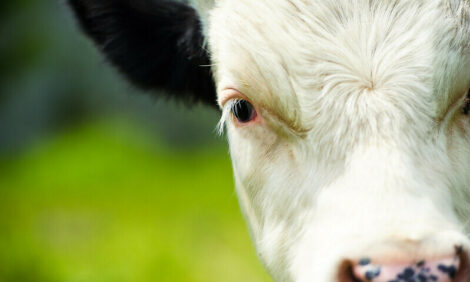



Missouri Dairy Graziers Cut feed Costs
US - At first, Missouri dairy producers looked to New Zealand for ideas on how to produce low-cost milk on pasture. Now the world, including New Zealand, looks to Missouri for ideas on grazing dairies.As farm-gate prices for milk plummeted, the idea of feeding dairy cows more grass and less grain has gained popularity.
The idea was slow to spread. The University of Missouri held the first "grazing schools" in the early 1970s. MU researchers started a pasture-based dairy at the MU Southwest Center, Mt. Vernon, Mo., in 1999.
An attentive audience of 291 people came to the 2009 Missouri Dairy Grazing Conference, July 8-10, to hear researchers and farmers tell the advantages of management-intensive grazing. "The time for the idea has come," said Ryan Milhollin, MU Extension economist and meeting organizer.
In his welcome, MU Vice Provost for Extension Michael Ouart said a small investment in research and extension pays off in economic development for the state. As of 2008, pasture-based dairies contribute $87 million a year and sustain 777 jobs.
Michael Murphy, an Irish dairyman who has traveled the world looking at grazing dairy farms, says Missouri has an advantage.
"The era of low-cost energy and low-cost grain is over. It is time for sustainable milk production," he said.
In an after-dinner speech, Murphy said the idea for dairy grazing is simple: Reduce labor, reduce feed input, cut machinery costs and build low-cost dairy structures.
He said the goal is not to produce maximum milk per cow, but optimum profit per farm. Mainly, that involves cutting costs to survive in an era of low milk prices.
"You are competing in a global milk market," Murphy said.
Charles Fletcher of Purdy, Mo., an early adopter of dairy grazing, said grazing has kept him in the dairy business. Fletcher doubled and then redoubled the size of his milking herd as he improved his Ozarks pastures and refined his grazing methods.
He said he learned to increase the stocking rate on his pastures. "If you stock too few cows, you have to harvest more forage to use later." As stocking rates increased, he added fertility to the pastures, increasing production and cow-carrying capacity.
"The plan is simple: See how much grass you can grow. Then determine how many cows it takes to consume it," Fletcher said. If grass runs short, add supplemental feed.
He advised those interested in grazing dairies to visit other grazing dairy producers. "You learn a lot from other farmers and university specialists."
David Baker, MU assistant dean for agriculture extension, said there is constant interchange among dairy farmers, researchers in the College of Agriculture, Food and Natural Resources and specialists in MU Extension. "We all learn from each other."
Murphy said pasture dairies concentrate on making milk. A dairy producer grows only forage and cows. The cows harvest their own feed and spread their own manure. That eliminates the labor-intensive chores of hauling feed and manure.
The pasture system also reduces need for expensive equipment. Fletcher estimated it could take a quarter-million dollars to add all of the tractors and forage harvesting equipment. He hires custom operators for needed harvesting work.
"Cutting operating expenses is a key to increasing operating profits," Murphy said. Too often producers do not track the indicators, such as costs, that lead to profits, he said.
Good management requires measurements, not only of milk produced but also grass growth. "Use the information collected," he said. "People who measure constantly, learn constantly."
Randy Mooney, dairyman at Rogersville, Mo., and chair of the National Milk Producers Federation, said in the opening session that the dairy industry is redesigning itself in this time of low milk prices.
"It's not an oversupply of milk, but a lack of money to buy our product," he said. "Already we are selling milk at below the cost of production."
The large dairies out West, based on hauling feed and low transportation costs, set a benchmark for the industry.
"That has changed, which is good news for Missouri," Mooney said. "We can compete in these situations. While the financial crisis makes it difficult to go to the bank and borrow money, it's an opportunity for the low-input dairy."
Mooney said his concern is that when prices rebound, dairymen will overproduce. "We are good at making more milk when prices are high, but not very quick to ratchet down when prices drop. In the dairy cycle, we have six months of good prices and 18 months of low prices."
TheCattleSite News Desk


